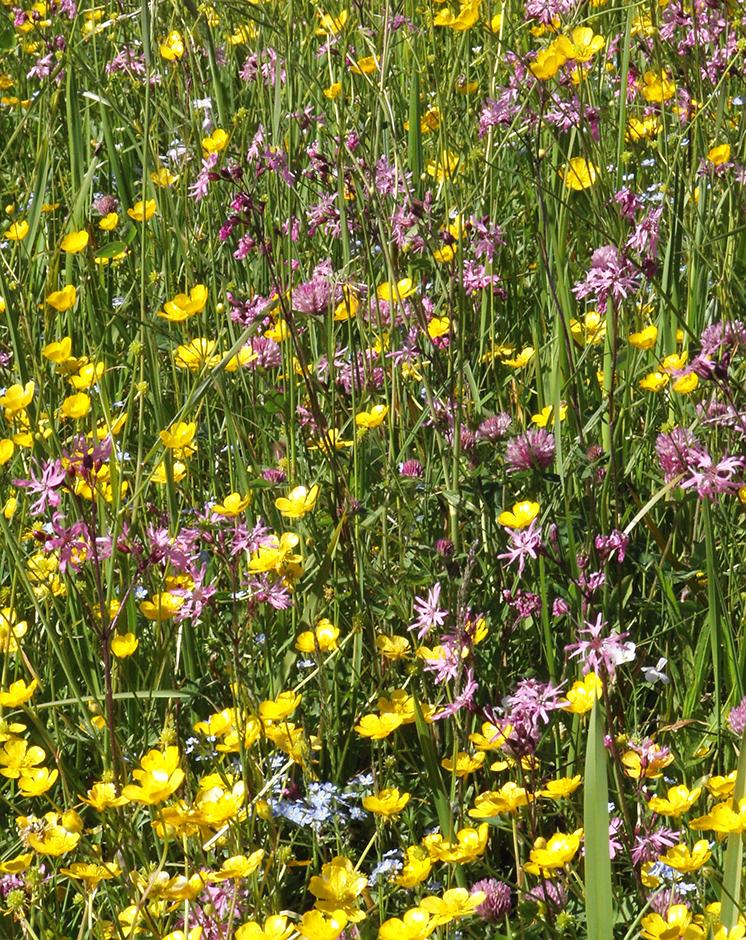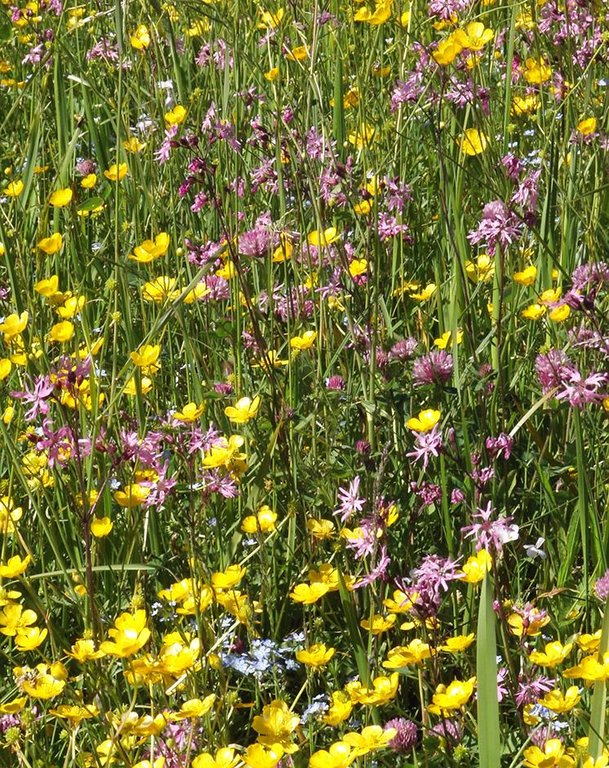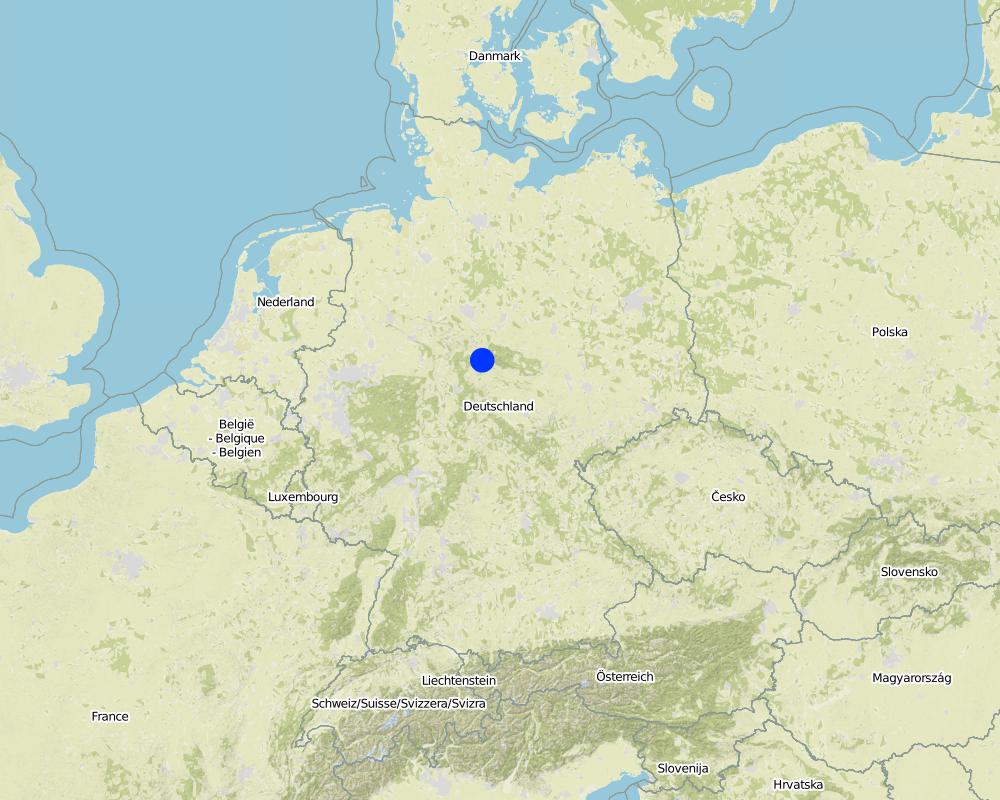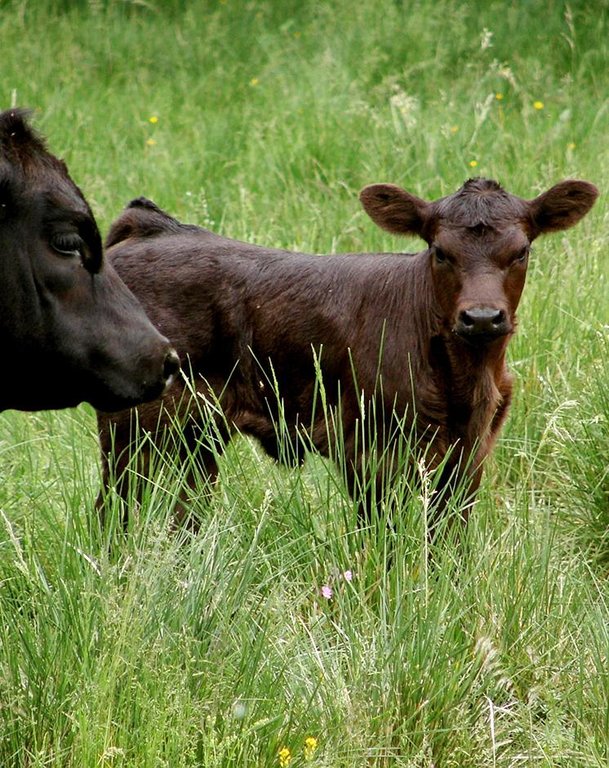Grassland preservation [德国]
- 创建:
- 更新:
- 编制者: Johanna Fick
- 编辑者: –
- 审查者: Fabian Ottiger, Deborah Niggli, Alexandra Gavilano
technologies_1699 - 德国
查看章节
全部展开 全部收起1. 一般信息
1.2 参与该技术评估和文件编制的资源人员和机构的联系方式
SLM专业人员:
Baum Sarah
Thünen Institute of Rural Studies
德国
有助于对技术进行记录/评估的项目名称(如相关)
Book project: Making sense of research for sustainable land management (GLUES)有助于对技术进行记录/评估的项目名称(如相关)
Climate Change - Land Use Strategies (CC-LandStraD / GLUES)有助于对技术进行记录/评估的机构名称(如相关)
Thünen Institute (Thünen Institute) - 德国1.3 关于使用通过WOCAT记录的数据的条件
编制者和关键资源人员接受有关使用通过WOCAT记录数据的条件。:
是
1.4 所述技术的可持续性声明
这里所描述的技术在土地退化方面是否存在问题,导致无法被认为是一种可持续的土地管理技术?:
否
1.5 参考关于SLM方法(使用WOCAT记录的SLM方法)的调查问卷
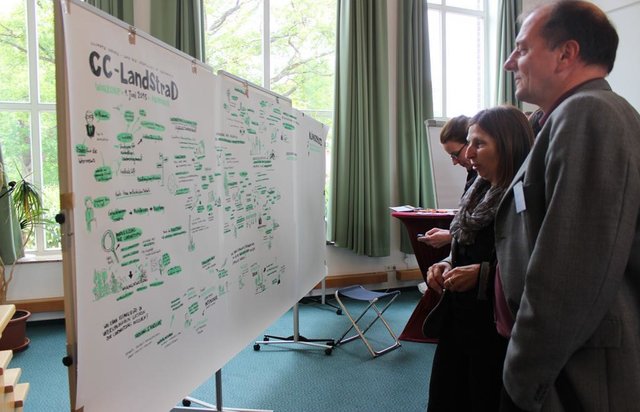
Open dialogue platform on sustainable land management [德国]
Establishing a dialogue platform on sustainable land management which is open to all stakeholders
- 编制者: Johanna Fick
2. SLM技术的说明
2.1 技术简介
技术定义:
Grassland preservation by the avoidance of ploughing up of grassland and its transformation into cropland
2.2 技术的详细说明
说明:
Increasing demand for food, feed and bioenergy provokes an increased demand for cropland. This leads to intensification of grassland and conversion of e.g. grassland to cropland. By converting grassland to cropland the enhanced mineralization of organic soil matter leads to high emissions of the greenhouse gases CO2 and, in a much lower extent, N2O. the other way around, if cropland is converted to grassland a long-term carbon sink is established that accumulates high amounts of carbon. Nevertheless the conversion of cropland to grassland cannot compensate GHG emissions caused by conversion of grassland to cropland. Due to the soil structure and characteristics C-sequestration in the soil is higher for grassland than for cropland and within the grasslands it is substantially higher for old, humus-rich and boggy sites (e.g. fens or peatbogs) than for young grassland on mineral soils (Schuler et al. 2014). GHG emissions from converting grassland to cropland are more than 12.5 times per areaunit higher for organic than for mineral soils (own calculations after UBA 2014). Avoiding conversion of grassland into cropland avoids on average 10 tCO2-equ/ha*a considering a time-period of ten years (Osterburg et al. 2009).
Purpose of the Technology: The aim of grassland preservation is to avoid/reduce GHG emissions and maintain and develop a carbon sink. Furthermore, grassland habitats have higher biodiversity than croplands and are, in general, less intensively managed. Thus, inputs of fertilizers and pesticides are lower, which is beneficial for water quality regardless of how intensively the grassland is managed. Unlike cropland, grassland is not ploughed or harrowed annually, resulting in better soil protection and a lower risk of erosion; the latter because of the year-round vegetation cover.
Establishment / maintenance activities and inputs: During a research project, the interdependencies between climate change and land use were analysed, and different strategies for sustainable land use management in Germany were modelled. Relevant land use measures which can contribute to the reduction of GHG emissions were evaluated with respect to climate mitigation, bioenergy by biomass, environmental and biodiversity protection (www.cc-landstrad.de). Grassland preservation is one land use practice which showed multiple advantages compared to cropland (after conversion from pasture): these were higher carbon sequestration and lower GHG emissions, better soil protection against erosion, and improved water storage capacity. The disadvantages and thus trade-off of grassland preservation are foregoing production of high-yielding cash crops, higher labour demand per hectare, and lower agricultural income. However, given the importance of preserving carbon stocks accumulated under grassland, the existing pastures should be retained wherever possible. The preservation of grassland is recommended everywhere, but especially for areas with organic soils/peaty soils - as high GHG emissions are the consequence otherwise.
2.3 技术照片
2.5 已应用该技术的、本评估所涵盖的国家/地区/地点
国家:
德国
区域/州/省:
Germany
有关地点的进一步说明:
Nationwide
注释:
Total area covered by the SLM Technology is 375000 m2.
Technology is modelled for all agricultural sites in Germany and was not implemented in a precise case.
Boundary points of the Technology area: 54.880451; 8.944112
50.955417; 14.836034
47.483324; 13.013274
47.590007; 7.595230
50.956057; 5.884301
53.567827; 6.999686
Technology is modelled for all agricultural sites in Germany and was not implemented in a precise case.
Map
×2.6 实施日期
如果不知道确切的年份,请说明大概的日期:
- 10-50年前
2.7 技术介绍
详细说明该技术是如何引入的:
- 通过项目/外部干预
注释(项目类型等):
Introduction of Cross Compliance (requirement for direct payment) in 2005 in the EU for protection and preservation of grassland
Technology has been refined and increased its significance especially in the past 10 years.
3. SLM技术的分类
3.1 该技术的主要目的
- 改良生产
- 减少、预防、恢复土地退化
3.2 应用该技术的当前土地利用类型

牧场
粗放式放牧:
- 经营牧场
集约放牧/饲料生产:
- 收割和携带/零放牧
- 改良牧场
动物类型:
- 马
- 绵羊
- cattle
注释:
Major land use problems (compiler’s opinion): Increasing demand for cropland area, and higher income options by cultivating cropland rather than grassland, thus loss of GHGs through conversion.
Major land use problems (land users’ perception): Increasing demand for cropland area. Grassland conversion into cropland might increase the farmer’s income if the soil is suitable for cropping.
Ranching: Cattle, sheep, horses
Cut-and-carry/ zero grazing: Yes
Improved pasture: Yes
Number of growing seasons per year: 1
Longest growing period in days: 235
Livestock density: 50-100 LU /km2
3.5 该技术所属的SLM组
- 最小的土壤扰动
- Carbon sink
3.6 包含该技术的可持续土地管理措施

管理措施
- M2:改变管理/强度级别
3.7 该技术强调的主要土地退化类型

土壤水蚀
- Wt:表土流失/地表侵蚀

土壤风蚀
- Et:表土流失

生物性退化
- Bc:植被覆盖的减少
- Bh:栖息地丧失
- Bs:质量和物种组成/多样性的下降
- Bl:土壤寿命损失

水质恶化
- Ha:干旱化
- Hp:地表水水质下降
- Hq:地下水水质下降
- Hw:湿地缓冲能力下降
注释:
Main causes of degradation: soil management (land use change connected with ploughing), crop management (annual, perennial, tree/shrub) (annual), increasing demand for land
3.8 防止、减少或恢复土地退化
具体数量名该技术与土地退化有关的目标:
- 防止土地退化
- 减少土地退化
4. 技术规范、实施活动、投入和成本
4.1 该技术的技术图纸
技术规范(与技术图纸相关):
Extensive suckler cow husbandry
Location: Arnegger Ried. Ulm, Baden-Wurttemberg, Germany
Date: 30.05.2013
Technical knowledge required for field staff / advisors: low
Technical knowledge required for land users: low
Main technical functions: improvement of ground cover, stabilisation of soil (eg by tree roots against land slides), increase in organic matter
Secondary technical functions: improvement of water quality, buffering / filtering water, reduction in wind speed, promotion of vegetation species and varieties (quality, eg palatable fodder)
作者:
Norbert Röder, Bundesallee 50, 38116 Braunschweig, Germany
4.5 维护/经常性活动
| 活动 | 时间/频率 | |
|---|---|---|
| 1. | The costs depend on the intensity of the management, the more intensive the use the higher the cost (e.g. reseeding etc.) |
4.6 维护/经常性活动所需要的费用和投入(每年)
| 对投入进行具体说明 | 单位 | 数量 | 单位成本 | 每项投入的总成本 | 土地使用者承担的成本% | |
|---|---|---|---|---|---|---|
| 劳动力 | Labour | ha | 1.0 | 135.0 | 135.0 | 100.0 |
| 设备 | Machine use | ha | 1.0 | 100.0 | 100.0 | 100.0 |
| 植物材料 | Seeds | ha | 1.0 | 100.0 | 100.0 | 100.0 |
| 技术维护所需总成本 | 335.0 | |||||
| 技术维护总成本,美元 | 335.0 | |||||
4.7 影响成本的最重要因素
描述影响成本的最决定性因素:
There are no direct costs if grassland is not converted but managed as before but there might be opportunity costs: If a farmer would convert his grassland to cropland and cultivate arable crops he might have a higher profit than he would have from grassland cultivation.
5. 自然和人文环境
5.1 气候
年降雨量
- < 250毫米
- 251-500毫米
- 501-750毫米
- 751-1,000毫米
- 1,001-1,500毫米
- 1,501-2,000毫米
- 2,001-3,000毫米
- 3,001-4,000毫米
- > 4,000毫米
有关降雨的规范/注释:
Annual rainfall: 250-500 mm, 500-750 mm, 750-1000 mm, 1000-1500 mm (Annual precipitation for Germany ranges between circa 430-1275mm)
农业气候带
- 潮湿的
Thermal climate class: temperate
5.2 地形
平均坡度:
- 水平(0-2%)
- 缓降(3-5%)
- 平缓(6-10%)
- 滚坡(11-15%)
- 崎岖(16-30%)
- 陡峭(31-60%)
- 非常陡峭(>60%)
地形:
- 高原/平原
- 山脊
- 山坡
- 山地斜坡
- 麓坡
- 谷底
垂直分布带:
- 0-100 m a.s.l.
- 101-500 m a.s.l.
- 501-1,000 m a.s.l.
- 1,001-1,500 m a.s.l.
- 1,501-2,000 m a.s.l.
- 2,001-2,500 m a.s.l.
- 2,501-3,000 m a.s.l.
- 3,001-4,000 m a.s.l.
- > 4,000 m a.s.l.
5.3 土壤
平均土层深度:
- 非常浅(0-20厘米)
- 浅(21-50厘米)
- 中等深度(51-80厘米)
- 深(81-120厘米)
- 非常深(> 120厘米)
如有可能,附上完整的土壤描述或具体说明可用的信息,例如土壤类型、土壤酸碱度、阳离子交换能力、氮、盐度等。:
Soil depth on average: Very shallow-shallow (Aspects not relevant. Further, grasslands are distributed german-wide and thus conditions are diverse)
Soil texture (Aspects not relevant. Further, grasslands are distributed german-wide and thus conditions are diverse).
Soil fertility (Aspects not relevant. Further, grasslands are distributed german-wide and thus conditions are diverse).
Topsoil organic matter (Aspects not relevant. Further, grasslands are distributed german-wide and thus conditions are diverse).
Soil drainage/infiltration is good
Soil water storage capacity is very high
5.4 水资源可用性和质量
地下水位表:
< 5米
地表水的可用性:
好
水质(未处理):
仅供农业使用(灌溉)
5.5 生物多样性
物种多样性:
- 高
关于生物多样性的注释和进一步规范:
Especially extensive grassland is species rich and contains rare and specialized species
5.6 应用该技术的土地使用者的特征
生产系统的市场定位:
- 商业/市场
个人或集体:
- 个人/家庭
性别:
- 女人
- 男人
说明土地使用者的其他有关特征:
Land users applying the Technology are mainly common / average land users
Population density: 200-500 persons/km2
Annual population growth: < 0.5%
Market orientation of production system: nature conservation
5.7 应用该技术的土地使用者使用的平均土地面积
- < 0.5 公顷
- 0.5-1 公顷
- 1-2 公顷
- 2-5公顷
- 5-15公顷
- 15-50公顷
- 50-100公顷
- 100-500公顷
- 500-1,000公顷
- 1,000-10,000公顷
- > 10,000公顷
注释:
Average area of land owned or leased by land users applying the Technology: 5-15 ha, 5-15 ha, 15-50 ha
Size of cropland per household:
Grassland 4.700.000 ha, houshould 40.200.000
Size of grazing land per household: farms 300.000 grassland 4.700.000 ha
5.8 土地所有权、土地使用权和水使用权
土地所有权:
- 个人,未命名
- NGO
土地使用权:
- 个人
注释:
human environment: Grassland per household: Grassland 4.700.000 ha, farms 300.000
6. 影响和结论性说明
6.1 该技术的现场影响
社会经济效应
生产
作物生产
产品多样性
水资源可用性和质量
饮用水的可用性
注释/具体说明:
In areas with low precipitation
饮用水的质量
注释/具体说明:
In areas with low precipitation
灌溉用水需求
注释/具体说明:
perhaps
收入和成本
农业投入费用
注释/具体说明:
Yes
农业收入
工作量
社会文化影响
娱乐机会
Improved livelihoods and human well-being
注释/具体说明:
Disadvantages will realised if grassland preservation won't be done.
生态影响
水循环/径流
水质
注释/具体说明:
Yes: Due to fertilization, pesticides
地表径流
土壤
土壤水分
土壤覆盖层
土壤流失
土壤结壳/密封
土壤压实
养分循环/补给
土壤有机物/地下C
生物多样性:植被、动物
植物多样性
有益物种
栖息地多样性
减少气候和灾害风险
碳和温室气体的排放
其它生态影响
Hazard towards adverse events
6.2 该技术的场外影响已经显现
风力搬运沉积物
6.3 技术对渐变气候以及与气候相关的极端情况/灾害的暴露和敏感性(土地使用者认为的极端情况/灾害)
渐变气候
渐变气候
| 季节 | 增加或减少 | 该技术是如何应对的? | |
|---|---|---|---|
| 年温度 | 增加 | 好 |
气候有关的极端情况(灾害)
气象灾害
| 该技术是如何应对的? | |
|---|---|
| 局地暴雨 | 好 |
| 局地风暴 | 好 |
气候灾害
| 该技术是如何应对的? | |
|---|---|
| 干旱 | 好 |
水文灾害
| 该技术是如何应对的? | |
|---|---|
| 比较和缓的(河道)洪水 | 好 |
其他气候相关的后果
其他气候相关的后果
| 该技术是如何应对的? | |
|---|---|
| 缩短生长期 | 好 |
6.4 成本效益分析
技术收益与技术建立成本相比如何(从土地使用者的角度看)?
短期回报:
消极
长期回报:
消极
技术收益与技术维护成本/经常性成本相比如何(从土地使用者的角度看)?
短期回报:
消极
长期回报:
非常消极
注释:
main cost are opportunity cost of arable land use, they occur yearly.
6.5 技术采用
注释:
There is a strong trend towards spontaneous adoption of the Technology
Comments on adoption trend: Within the Common Agricultural Policy of the EU reform grassland protection is enhanced since 1 January 2015. In Germany the conversion of grassland is subject to approval and in general only permitted if the same area converted is established as grassland in the same region.
6.7 该技术的优点/长处/机会
| 土地使用者眼中的长处/优势/机会 |
|---|
| Conservation/restoration of regional typically landscapes. |
| 编制者或其他关键资源人员认为的长处/优势/机会 |
|---|
| By avoiding conversion of grassland to cropland huge amounts of GHG emissions can be avoided. Further advantages are a lower risk of soil erosion, possible flood prevention, lower levels of fertilizers and pesticides leaching into runoff waters, and higher biodiversity conservation. |
6.8 技术的弱点/缺点/风险及其克服方法
| 土地使用者认为的弱点/缺点/风险 | 如何克服它们? |
|---|---|
| The income from grassland might – if location factors like soil, water availability are suitable – be lower than it would be for cropland. Thus, there can be high opportunity costs of preserving grassland. | Grassland preservation can be enhanced by legal restrictions. Financial incentives for land users make grassland preservation more attractive from an economical point of view. |
7. 参考和链接
7.1 信息的方法/来源
- 实地考察、实地调查
- 与土地使用者的访谈
(现场)数据是什么时候汇编的?:
29/07/2015
7.2 参考可用出版物
标题、作者、年份、ISBN:
UBA (2014)
可以从哪里获得?成本如何?
http://www.umweltbundesamt.de/publikationen/schwerpunkte-2014
标题、作者、年份、ISBN:
Osterburg B et al. (2009) Erfassung, Bewertung und Minderung von Treibhausgasemissionen des deutschen Agrar- und Ernährungssektors.
可以从哪里获得?成本如何?
Studie im Auftrag des Bundesministeriums für Ernährung, Landwirtschaft und Verbraucherschutz. Arbeitsberichte aus der vTI-Agrarökonomie 2009/03, Braunschweig, Hamburg, Trenthorst
标题、作者、年份、ISBN:
Schuler J et al. (2014) Instrumente zur Stärkung von Synergien zwischen Natur- und Klimaschutz im Bereich Landbewirtschaftung
可以从哪里获得?成本如何?
BfN-Skripten, pp. 187. Bonn, Bad Godesberg
可以从哪里获得?成本如何?
http://www.umweltbundesamt.de/publikationen/berichterstattung-unter-der-klimarahmenkonvention
可以从哪里获得?成本如何?
http://www.umweltbundesamt.de/publikationen/berichterstattung-unter-der-klimarahmenkonvention
7.3 链接到网络上的相关信息
URL:
http://www.umweltbundesamt.de/publikationen/submission-under-the-united-nations-framework
链接和模块
全部展开 全部收起链接

Open dialogue platform on sustainable land management [德国]
Establishing a dialogue platform on sustainable land management which is open to all stakeholders
- 编制者: Johanna Fick
模块
无模块


